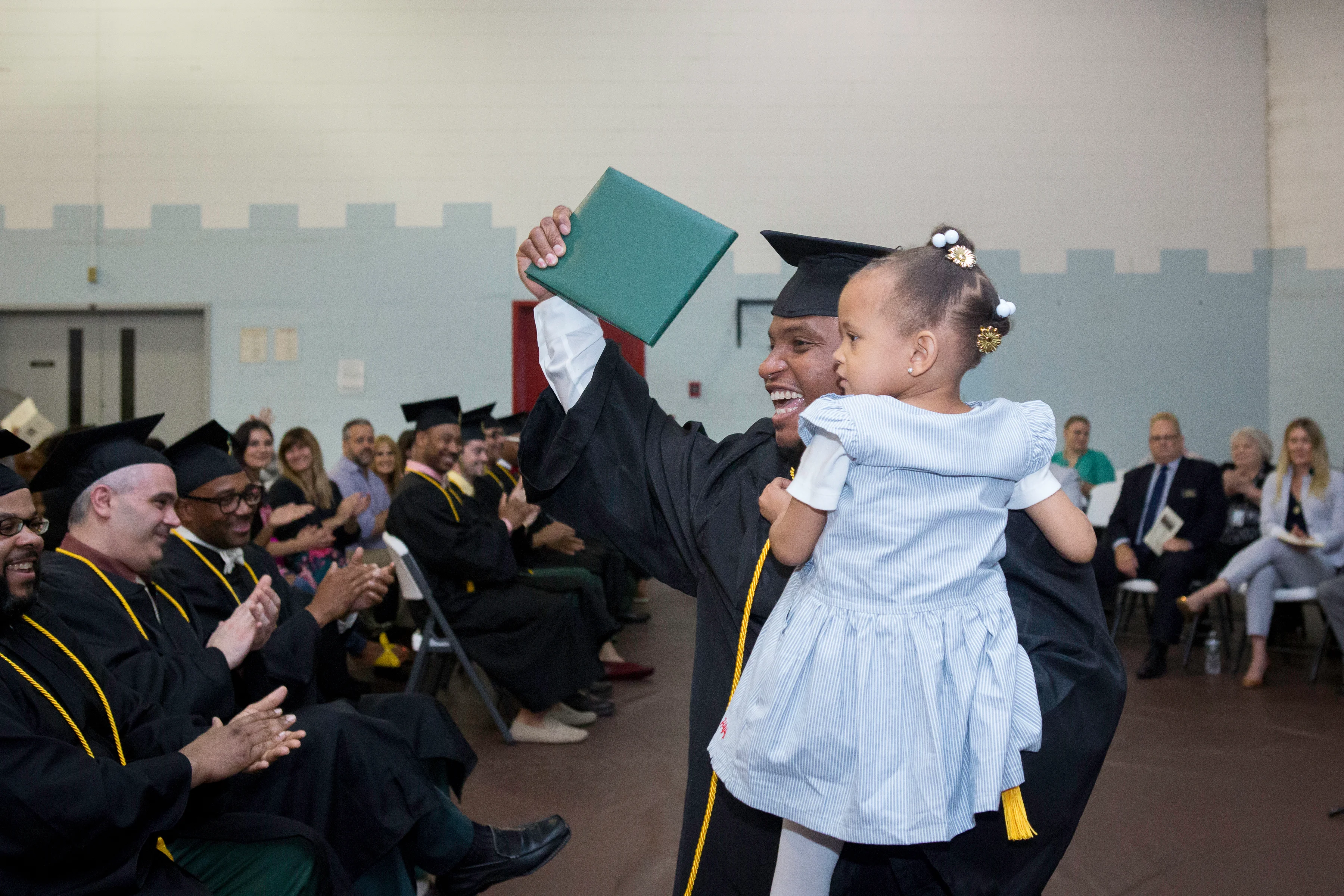
What’s the Point of Higher Education in Prison? For One Thing, It’s a Human Right.

Mellon program officer Maria Sachiko Cecire and senior program officer Carolyn Dinshaw discuss changes to Higher Education in Prison (HEP) programs in light of the recent expansion of Pell Grant eligibility, which aims to benefit incarcerated learners.
Within the US’s sprawling system of incarceration—consisting of some 5,000 state and federal prisons and local jails—only a small group (roughly 600 locations) support higher education programming. Even fewer offer rich and nuanced arts and humanities curricula, which not only combat dehumanizing carceral settings but also help shape learners—incarcerated or otherwise—into accomplished scholars. Until 1994, Pell Grants (which were created to offset the cost of college for students from low-income backgrounds) improved access to these and other potentially transformative higher education programs for incarcerated learners. But for almost three decades, the Violent Crime Control and Law Enforcement Act (more commonly known as “The Crime Bill”) explicitly rendered incarcerated learners ineligible to benefit from this crucial form of financial aid.
Now there’s good news to report: In July 2023, Pell eligibility expanded to include incarcerated students once again, ushering in a new and more inclusive era for HEP programming.
Mellon’s Higher Learning team has worked across government and higher education institutions in preparation for the Pell eligibility expansion. Program officers Maria Sachiko Cecire and Carolyn Dinshaw share their thoughts on how the HEP field is evolving—and how evaluating the success of prison programming is an important, though not so straightforward, point of discussion.
With nearly $50 million invested in HEP programs since 2015, Mellon’s HEP programming focuses on supporting degree-granting programs for individuals within the criminal legal system. It is advanced alongside the Imagining Freedom Presidential Initiative, which also focuses on those affected by the criminal legal system, but emphasizes artists, writers, thinkers, humanists, memory workers, and storytellers outside of higher education.
Higher Education in Prison (HEP) programming has been expanding rapidly, especially recently, as institutions prepared for Pell Grant eligibility expansion. That’s a good thing. But what’s imperfect about access to higher education programming in prisons now? Where is there opportunity for positive change?
Carolyn: I think one of the major challenges lies in unequal opportunities available in women’s facilities relative to those available in men’s facilities. Granted, there are far fewer women incarcerated in the US today than there are men. But for those women who are incarcerated, there are very few higher learning avenues. So we’ve been mindful about trying to get to as many women’s institutions as we can. We’ve also had conversations with various institutions that are either serving Indigenous populations or looking to start a HEP program because they’re located in areas where a disproportionate number of, say, tribal members are incarcerated.
Maria: And then there’s the bigger picture, which probably won’t be a surprise: in the same way that Black, Brown, and Indigenous people are disproportionately incarcerated and represented in the criminal legal system, there are also disparate educational outcomes for people of color inside. That means that even when thinking about carceral facilities where higher education and prison opportunities are available, oftentimes who has the prerequisites to start a higher education program skew in ways that can limit equitable access to learning. That’s something that we’ve been working with some of our partners around: things like college readiness and pathways to help prepare students to be able to enroll in the first place.
In this vein, some of the work that Ved Price, executive director of the Alliance for Higher Education in Prison (Alliance), is doing involves building cultures of interest and support around higher education and liberal arts–based learning inside of incarcerated populations. That’s a broader way of thinking about demographics—recognizing that often, if you leave it to departments of corrections to select students, those student selection groups will also tend to be racially inequitable.
Program Officer
“The programs that we support are focused on thinking about higher education as a kind of human right. ”
In general, HEP programming often stresses things like vocational training and reentry programs, whereas Mellon’s HEP work focuses on the humanities. Why are the humanities an important area of emphasis?
Maria: So much of the educational funding or support that goes toward incarcerated folks is about a deficit model that sees them as needing to be fixed, and as needing to reenter society in a way that is economically beneficial for the whole. Accordingly, a lot of the resources are geared toward vocational training and recidivism. The programs that we support are focused on thinking about higher education as a kind of human right—that the opportunity to engage seriously with ideas and with each other is something that everybody should have.
We don’t have anything against vocational training or anybody who wants to go into a vocational field. It’s more that we believe that learners should not have a predetermined pathway. The liberal arts prepare you, and train you, and give you experience in thinking and working in ways that could lead in many, many different directions.
Carolyn: I think Jody Lewin—who is a key figure in the HEP landscape and president of Mount Tamalpais College out at the San Quentin State Prison in California—reminds us that you’d never say the value of a Stanford degree is that it reduces the likelihood that the graduate will go to prison. That’d be a really low bar, a pretty impoverished assessment of what higher education is and can do.
Senior Program Officer
“[Folks who are incarcerated] are real knowledge producers, and they should be viewed that way.”
If it’s less through the lens of recidivism, how should we think about the success of HEP programs? What positive outcomes does higher education in prisons lead to?
Carolyn: Well, it starts with this point that to be a learner—to be in school—is actually an identity one assumes. And for some folks inside the walls, it’s an unfamiliar identity. To some, it’s even undesirable.
Maria: So being a learner is just the first of a series of cascading identity transformations that can happen when a student in a carceral setting is enrolled in higher education. It can really start to unlock all these other ways that they think about themselves, and frankly, the way that other people think about them. That is so powerful. And that can have ripple effects that change societies, we hope.
Carolyn: I would also just throw in that students on the inside are doing some incredible primary research. It’s sometimes very arduous and difficult research—like intensively researching the history of the carceral facility itself using archival documents that are very difficult to access. So I think that, to Maria’s point about the transformation of the way people outside look at folks who are incarcerated, they are real knowledge producers, and they should be viewed that way.
Maria: Exactly. This is an incredible body of thinkers who can contribute to much-needed research about our criminal legal system, about populations who’ve been underserved, about any number of things—and who currently have very, very little voice in that work. They know things to research; they know questions to ask that other people wouldn’t.
Related

